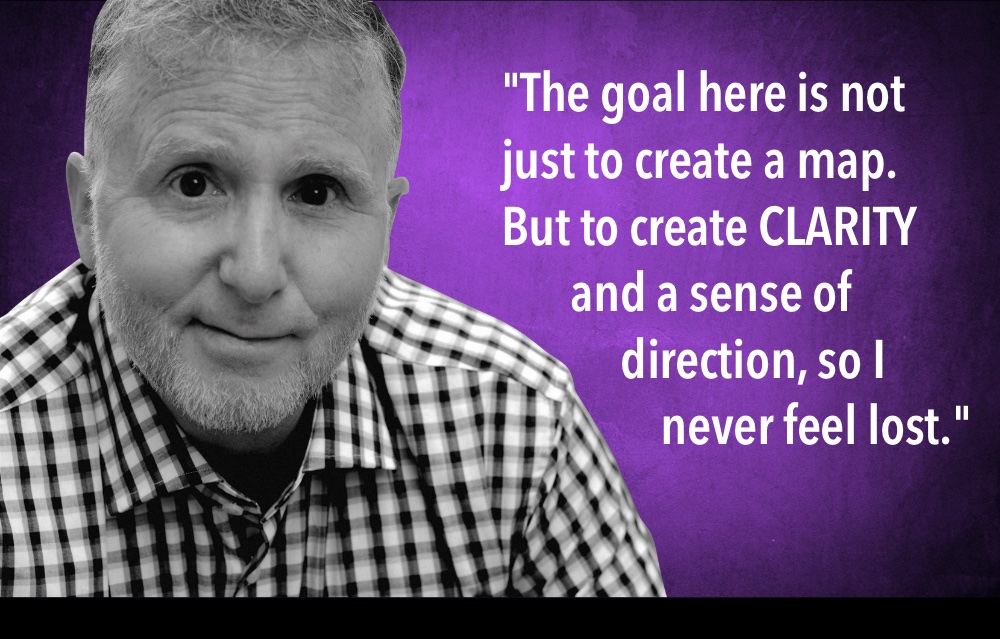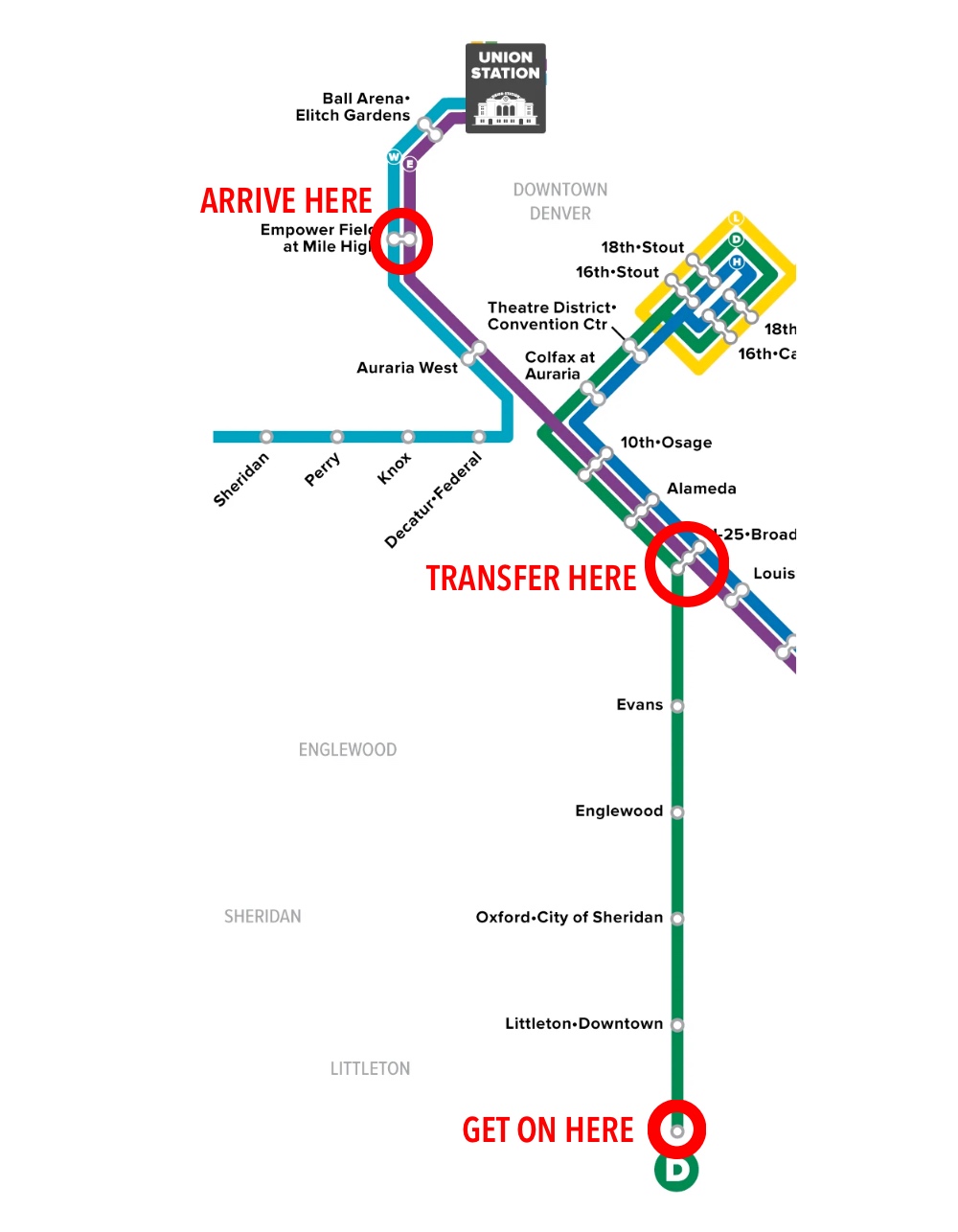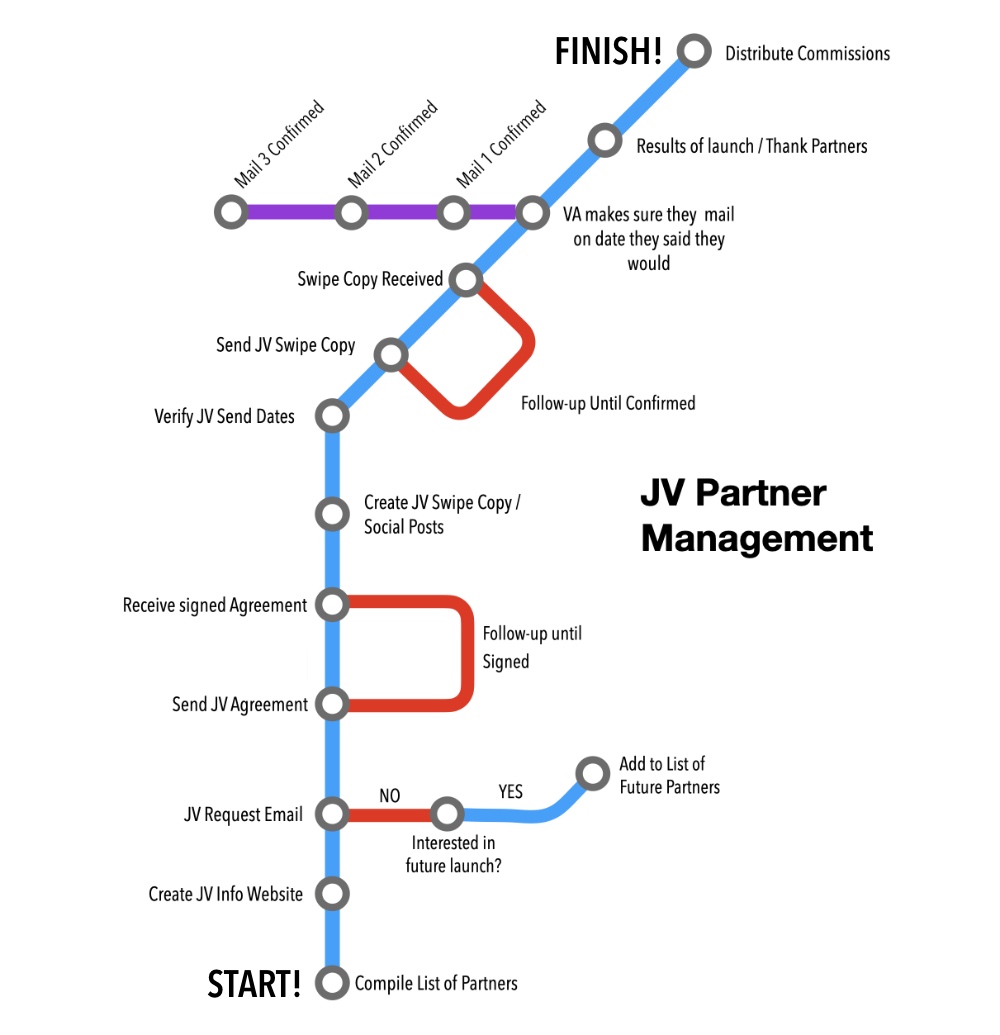
On paper it sounds awesome:
I’m talking about all the “road maps” designed to help you achieve an outcome you really want.
The problem with road maps is there’s usually a lot of steps. Explanations. Complexity.
Because … well … achieving big impact results isn’t easy.
While that’s true, being able to see the path to those results should be.
I’m talking about an “at-a-glance” overview that’s:
Visual
Something most of us have seen and used.
That provides a sense of motion, direction, and momentum
With a clear Starting point and destination
And any detours clearly spelled out
So you’re never lost.
You always have a sense of where you are in the process. How far you’ve come. And what your next step to achievement is.
It’s something I’ve recently been using with clients to clarify and simplify complex endeavors like launches or summits that would normally overwhelm them.
It’s a subway map.
“That’s fine Rob, but I don’t live in Manhattan.”
I’m talking about a subway map applied to processes you’re taking your clients through.
So they’re never confused. They always know where they are. And what’s next.
For example: I’m visiting Denver soon, and I need to get from Littleton to the football stadium near downtown.
This map makes it easy:

I know where I’m starting. I know where to transfer. I know my destination.
And even though I don’t know the neighborhood, I know the station sequence so I’m never disoriented.
I know exactly where I’m located. I’m never lost.
You can use a similar map for your overall process. And smaller maps for specific steps that require more detail.
- Whether it’s a workout / nutrition strategy for weight loss clients.
- A Facebook Ads strategy map to keep your beginner ads students from hitting the panic button.
- Or a real estate investment strategy to show clients how to purchase their first piece of property in a new market,
Whatever you guide your clients through, you can create a map that allows them to see the process in one glance.
So how do you create the map?
STEP ONE: Lay out your steps. You can use a Word Doc, Post-it notes, or the back of a napkin.
STEP TWO: Open Keynote (Mac) or Powerpoint. You could even use Google Slides.
STEP THREE: Create a blank slide with no text placeholders.
STEP FOUR: Use the circle, line and text draw tools to create the steps (circles), the direction of the sequence (lines) and the names / descriptions of the steps (text).
STEP FIVE: Export the slide as a PDF or an image to use as part of a larger document.
And you can use different color lines to denote different arms of the process or different possibilities.
Yep, it’s that simple.
Here’s an example map I created for managing JV Partners for a launch.

You might be saying, “Rob, that’s just a flow chart!”
The problem is flow charts can freak people out and activate their tech overwhelm heebie-jeebies.
Subway maps don’t.
Remember the goal here is not just to create a map. But to create CLARITY with the map. And a sense of direction so I never feel lost.
Ohhhh, now I get it!
You might also be asking, “Why not just create a list?”
You could.
But lists are just steps. They don’t convey flow, movement, momentum, location or progress.
I’ve found there’s just something about this layout that puts clients’ minds at ease and prevents the confusion and disorientation that can happen when you’re trying to achieve something big.
To sum it up:
Guiding clients to achieve a profound result is hard enough, with everything they need to master.
Not to mention dissolving their fears and psychological barriers.
These maps will not instantly guarantee your clients ascend to the heights of ultimate achievement.
They will help to simplify the picture in their minds of what it will take.
And reduce the doubts that are often more crippling to their quest than a lack of ability.
